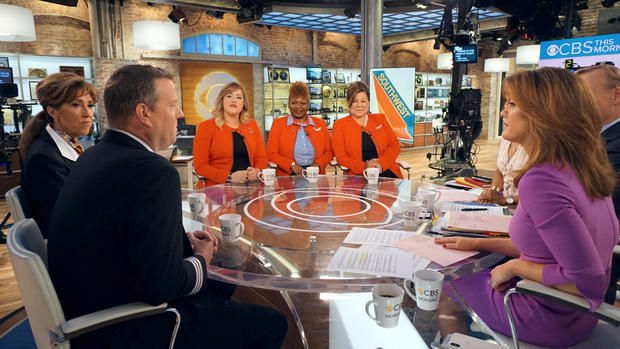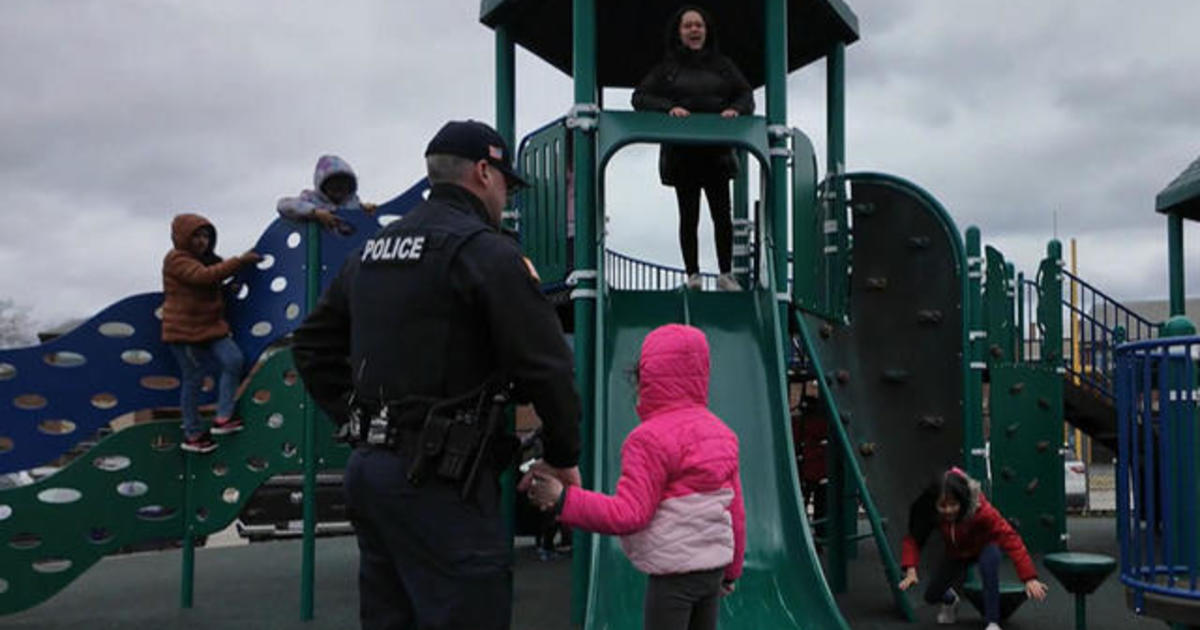Heroic crew of Southwest Flight 1380 describe bond, faith that pulled them through chaos
About 20 minutes after Southwest Flight 1380 took off from New York's LaGuardia Airport on April 17, one of the plane's engines exploded, sending debris through a passenger window and causing the cabin to lose pressure. As the Boeing 737 quickly began losing altitude, Capt. Tammie Jo Shults and first officer Darren Ellisor called for an emergency landing at Philadelphia International Airport. Terrified passengers grabbed oxygen masks from the ceiling and one passenger, Jennifer Riordan, was partially sucked out of the window and died. Remarkably, the pilots landed the plane with just one engine.
Shults, Ellisor, and flight attendants Rachel Fernheimer, Seanique Mallory and Kathryn Sandoval joined "CBS This Morning" Wednesday for their first joint, live interview to discuss the harrowing ordeal.
Shults said that while they were relieved to land the plane safely that success was overshadowed by the death of Riordan.
"The survival of 148 never eclipses the loss of one," Shults said.
Though Shults had never flown in this type of situation before, she said her military training kicked in.
"I have been in cockpits where the dynamics of the flight are not normal and they also make it hard to even see or read the instrumentation. So that certainly helped to kind of keep my calm when this sudden explosion happened, and we are moving in a radical way and we're not in balanced flight," she said.
Shults called her co-pilot, Ellisor, one of the "unsung heroes" of the incident. The two had to quickly, and creatively, split up everything that needed to happen for a safe landing. Ellisor handled communicating with the flight attendants. Shults said she and Ellisor "had a little pilot charade going on" because of all the commotion.
"He made keeping in contact with the flight attendants his priority," Shults said. "He took care of switches, checklists, but he was always available when they called so that he could answer their questions, he could give them information because it's so different when you're in the back and you don't see what's happening, you have no control of what's happening and you don't know what they're doing or thinking about, so he kept them calm."
"Initially our job is to get on oxygen to take care of ourselves first," Ellisor said, "communicate with ourselves, and once we take care of the plane and get the first initial checklist, then our job is to talk to the flight attendants and find out OK what's going on back there, how are you doing."
The crew also discussed the shared faith that got them through the incident and how they managed to communicate and stay calm amid the chaos.
"Well, in LaGuardia, when we had a little extra time, we were chatting, and Rachel had gotten a new Bible with room to journal on the side, and she and Seanique and then Kathryn was talking about she was in a study of Psalms, which is where I'm doing a study in Psalms and Proverbs," Shults said of the meeting the crew had before the flight. "When you talk about things deeper than the weather, your family and faith, the things that matter to you, even if they're different, it tends to bring a bond."
That shared faith among the crew, who had never flown together before, didn't just bond them; it created a sense of communal calm.
"Well, it was the peace that God had given us all. It's a peace that surpasses all understanding. Like Tammie Jo said, we came together beforehand and we all talked about God, and not knowing what was going to happen minutes later, God had already prepared us without us even knowing," Seanique Mallory said.
"We didn't have to communicate verbally with each other because we just had trust and we were able to just do what we needed to do. But to communicate with our passengers we had to have a very loud, stern but caring voice," Rachel Fernheimer added.
Faith and trust also helped them communicate with the terrified passengers, who look to flight attendants in times of uncertainty.
"I would just grab their hands even if I had to stretch over into a window seat and I would just look into some of their bloodshot eyes and say, 'Look at me. We're going to be OK. We're going to make it. We are going to Philadelphia and we are here together.' And I think that was the most important thing was to just – even though our ears had popped from the rapid decompression and there was wind and debris all throughout the cabin, in the midst of chaos you have to just look at someone. And I think eye contact was the biggest communication during that," Fernheimer said.
A preliminary finding determined a fatigued engine blade snapped, causing the plane's engine to tear apart. Southwest Airlines has finished inspecting its engine fan blades after the deadly incident and said it did not find any fatigued blades. The National Transportation Safety Board is still investigating the engine failure.




